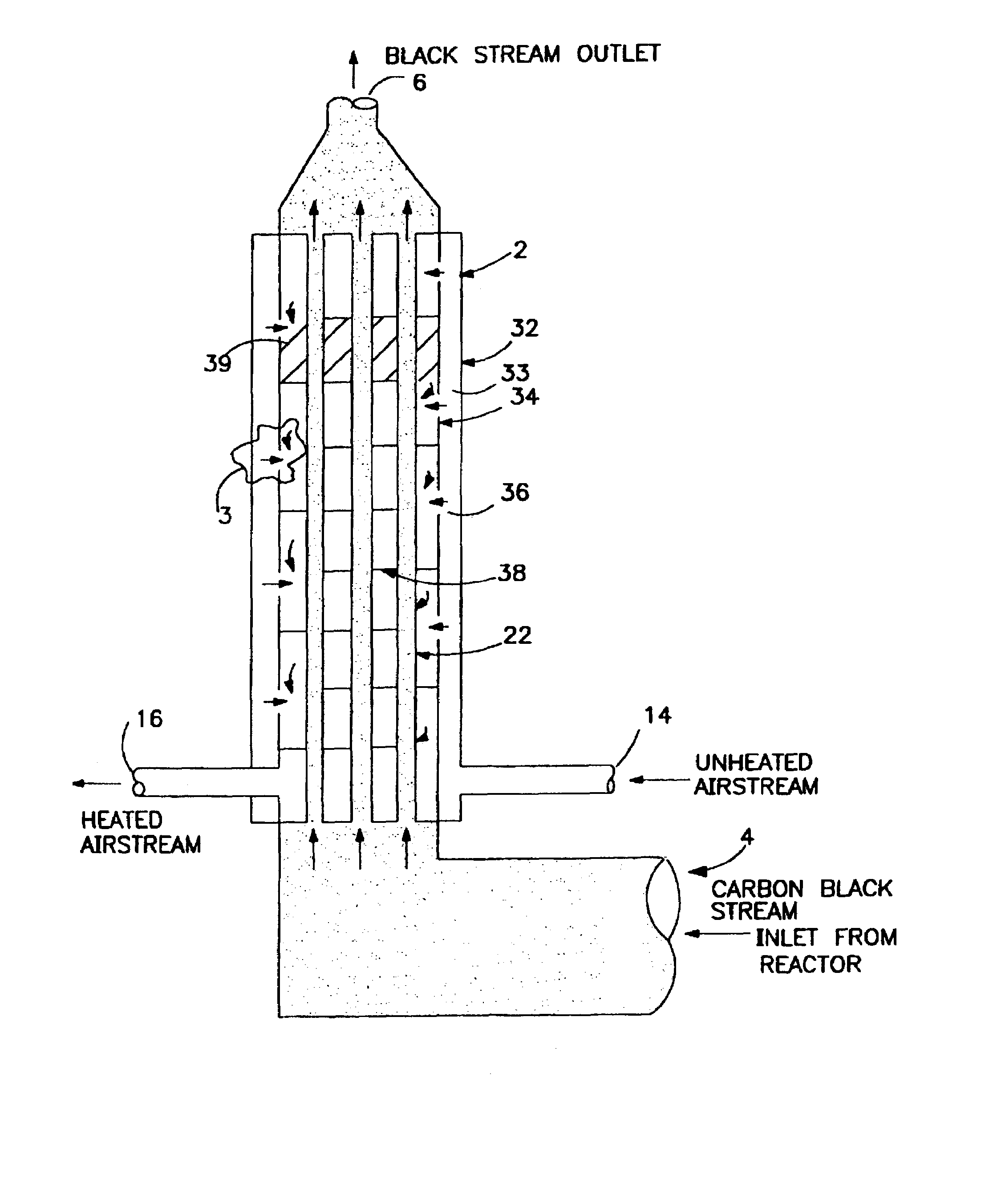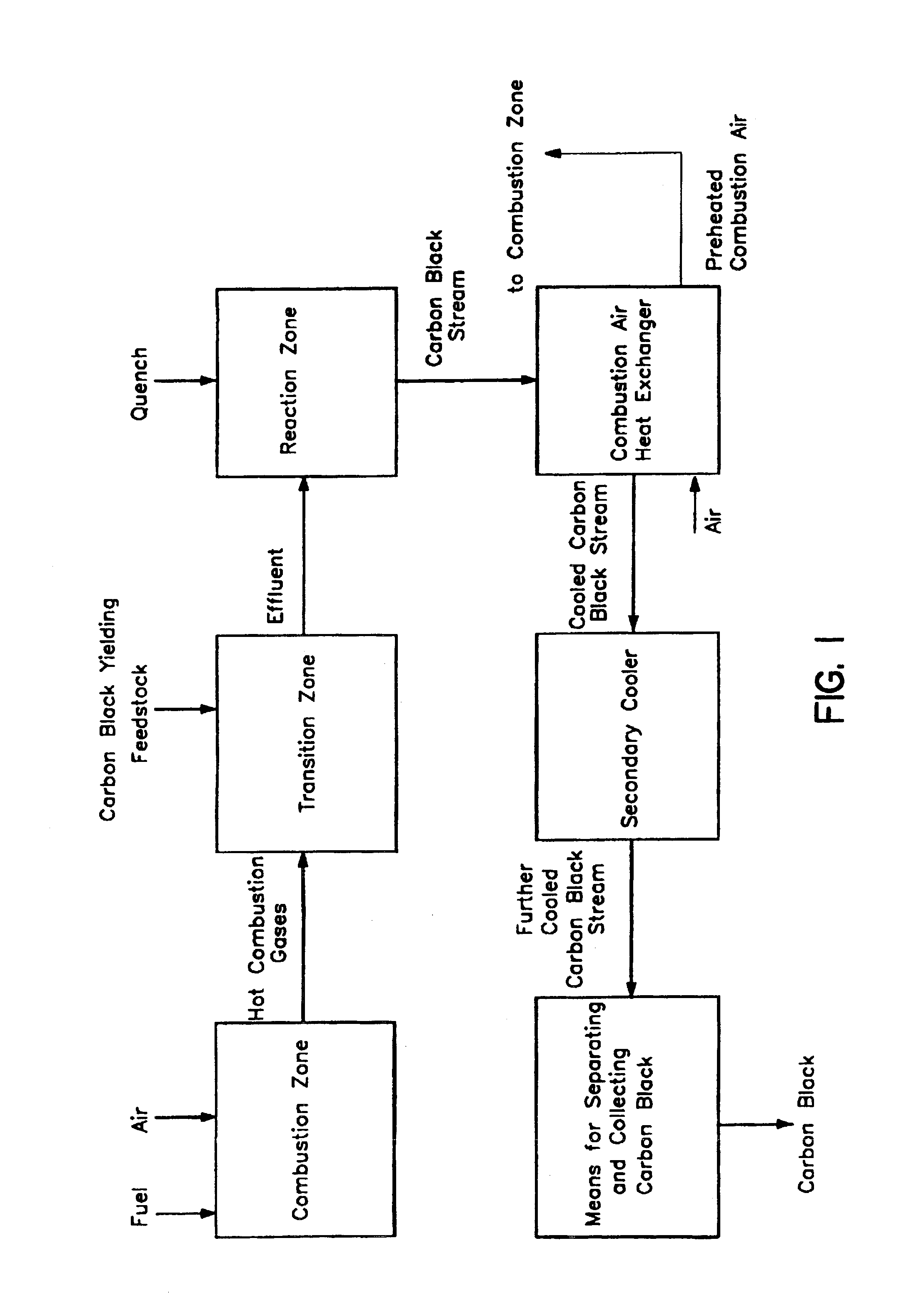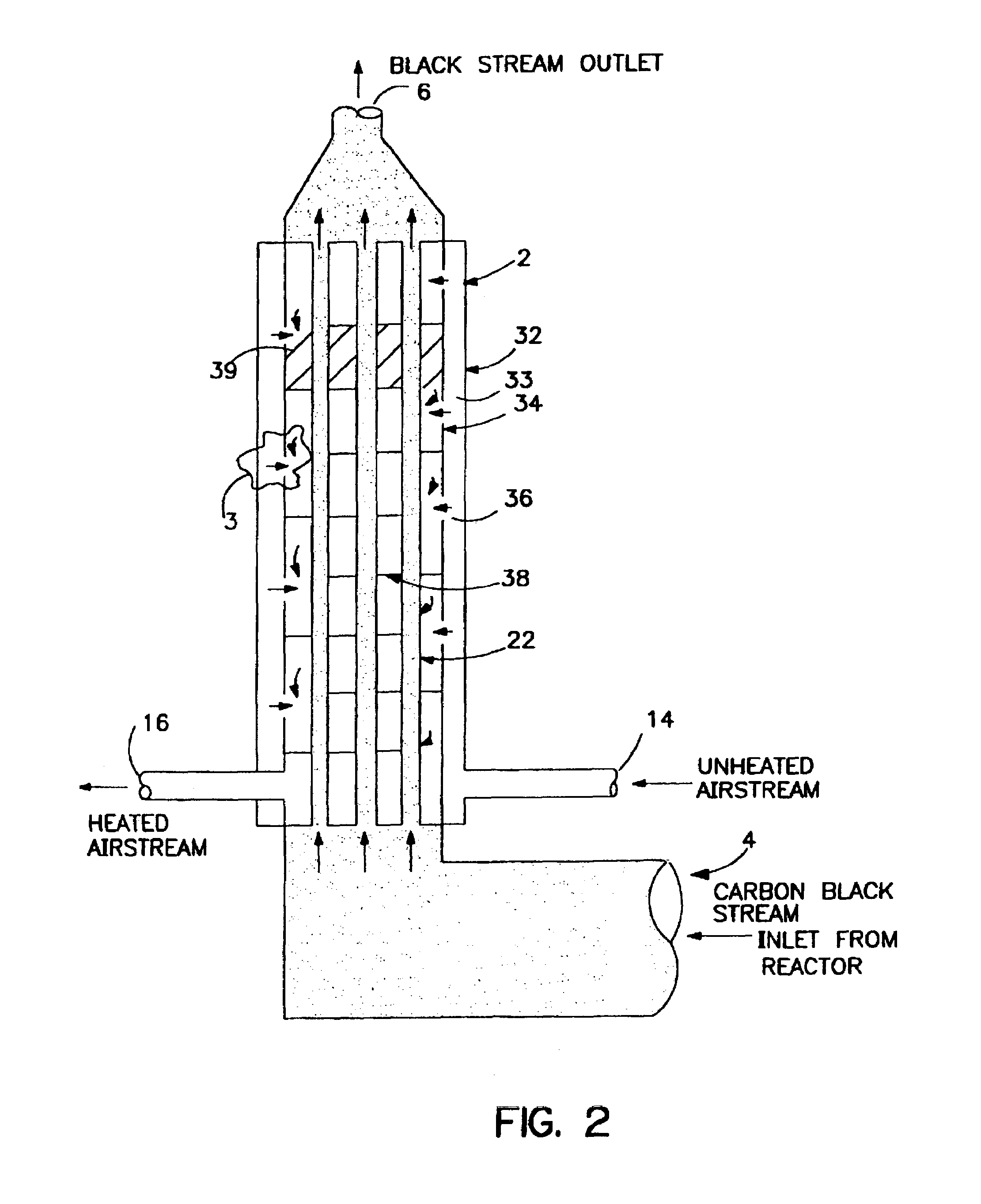Heat exchanger
a heat exchanger and heat exchange surface technology, applied in indirect heat exchangers, lighting and heating apparatus, transportation and packaging, etc., can solve the problems of reducing the air exiting temperature, cyclical fouling of heat exchanger surfaces in carbon black processes, and affecting the efficiency of heat exchangers, so as to reduce or minimize fouling of heat exchange surfaces in combustion air heat exchangers, inhibit the effect of fouling of heat exchange surfaces
- Summary
- Abstract
- Description
- Claims
- Application Information
AI Technical Summary
Benefits of technology
Problems solved by technology
Method used
Image
Examples
example
[0080]This example illustrates an embodiment heat exchanger of the present invention suitable for use as a combustion air heat exchanger in a carbon black production process and the advantages acheived by its use.
[0081]The features of the present invention were demonstrated on a carbon black unit with one reactor and one shell and tube heat exchanger (combustion air heat exchanger). Prior to use of a combustion air heat exchanger of the present invention, the unit had a conventional, counter-current, shell and tube heat exchange. It contained 40 tubes of 3.5 inches outside diameter, 50 feet in length and contained 33 baffles i.e. 34 baffle passes. The black stream was on the tubeside and the air stream was on the shellside. It was installed vertically so the black stream enters from the bottom. This heat exchanger normally fouled to a large extent, as shown by the large tubeside pressure drop. When the unit was periodically shutdown, it was observed that up to 35% of the tubes were ...
PUM
| Property | Measurement | Unit |
|---|---|---|
| temperature | aaaaa | aaaaa |
| temperature | aaaaa | aaaaa |
| temperature | aaaaa | aaaaa |
Abstract
Description
Claims
Application Information
 Login to View More
Login to View More - R&D
- Intellectual Property
- Life Sciences
- Materials
- Tech Scout
- Unparalleled Data Quality
- Higher Quality Content
- 60% Fewer Hallucinations
Browse by: Latest US Patents, China's latest patents, Technical Efficacy Thesaurus, Application Domain, Technology Topic, Popular Technical Reports.
© 2025 PatSnap. All rights reserved.Legal|Privacy policy|Modern Slavery Act Transparency Statement|Sitemap|About US| Contact US: help@patsnap.com



